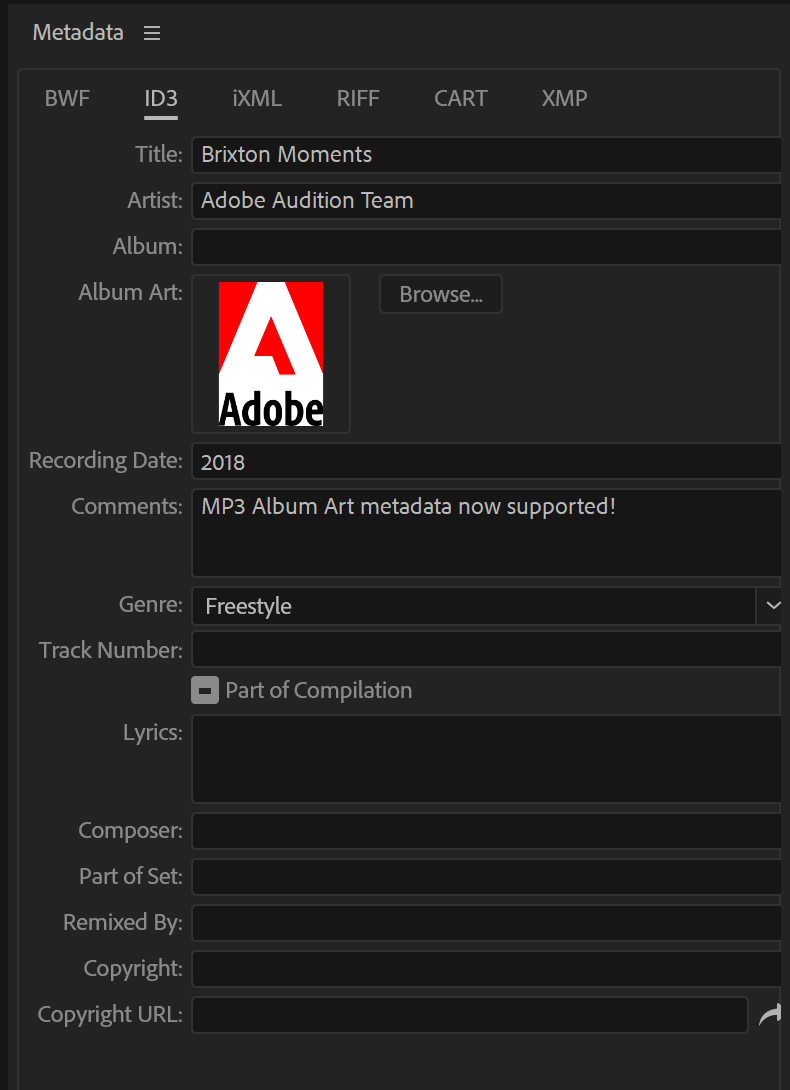
Aac Files In Adobe Audition
Sep 1, 2008 - iTunes has sold over a billion compressed audio tracks in AAC format. In Adobe Audition, we generated WMA and Windows Lossless files.
Podcasts are radio-style talk shows and audio broadcasts that can be downloaded or streamed over the Internet. Creating a podcast requires basic understanding of recording, audio editing and mixing, and streaming or publishing.
Vulnerable Windows virtual machines to hack There are plenty of vulnerable virtual machines to practice your hacking skills available on vulnhub.com, but they're all Linux boxes. If you'd like to practice on Windows, Microsoft has made available for download Windows XP with Internet Explorer 6, up through Windows 10 with the Edge browser. Penetration Testing - Vulnerable - ISO. All files are well sorted by topics and with increasing difficulty. You need Windows XP, Windows Vista or Windows 7 to use. What is Damn Vulnerable Windows XP? This is a Windows XP Virtual Machine that provides a practice environment to conduct ethical penetration testing, vulnerability assessment, exploitation and forensics investigation. The Microsoft Software License Terms for the IE VMs are included in the release notes. Vulnerable windows xp iso.
Audition makes the podcast creation process easier through its intuitive editing and mixing interface. Begin your podcasting process by scripting the content and setting up the ambience, microphone, and other recording equipment. After you record the audio, you can edit and refine it in Audition to remove unwanted noises, using the EQ to enhance the audio, and perform advanced edits and refinements. You can record your podcast audio using a variety of equipment ranging from a standalone USB or analog microphone to a combination of microphones, audio interfaces, mixers, and so on. Most podcasters record audio by directly plugging in a microphone to a USB slot or microphone slot on their audio hardware. Audition supports a wide range of audio input and output hardware.
The equipment is detected, drivers are updated, and audio preferences are set as you connect a recording device to your computer. Before you start to record, be sure to check the audio input and output preferences in the Audio Hardware Preferences dialog box. To set audio preferences according to your requirements, choose Edit > Preferences> Audio Hardware and select your settings under the Default Input and Output options. Map dota naruto vs bleach ai terbaru 2017 full. The Essential Sound Panel allows you to assign a mix type for your clip and apply edits that suit the nature of the clip. For example, if you assign Dialogue as the mix type for a voice clip, the Dialogue tab of the Essential Sound panel presents you several parameter groups related to that mix type. The parameters allow you to carry out the common tasks that are associated with dialogue, such as unifying the different recordings to common loudness, reducing background noise, and adding compression and EQ. The mix types in the Essential Sound panel are mutually exclusive, that is, selecting one mix type for a clip reverts the previous changes done on that track using another mix type.
After you are done with your edits and previewing your changes, you can save your podcast in the format and settings that suits your target media. The most common formats for podcast delivery are MP3 or AAC. MP3 is the most popular format used by podcasters. However, AAC files, often stored as.aac or.m4a files, offer better audio quality at smaller file sizes compared to MP3. AAC also supports metadata that MP3 does not support, such as Chapter Markers, and embedded links and images. Recording your podcast at a higher encoding rate retains rich audio details. For stereo podcasts, 128-kbps MP3 is widely used.
For mono, podcast talks, 64-kbps MP3 is used. When it comes to efficient compression, smaller file size, and better audio quality, a 64-kbps AAC-HE (high efficiency) stereo file would fare better than a 128-kbps MP3. Audition gives you a range of output and encoding options within the application or outside, such as exporting to Adobe Media Encoder. Adobe Media Encoder includes a series of formats and presets that allow you to render and publish high-quality audio output from Audition. Note: To use the Export with Adobe Media Encoder, you must have installed the same version of Adobe Media Encoder as Audition on your computer.